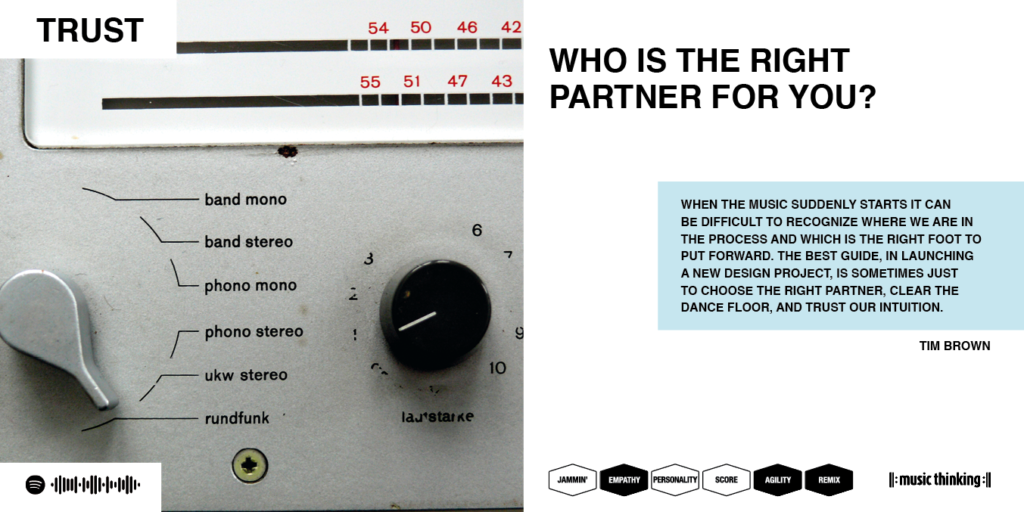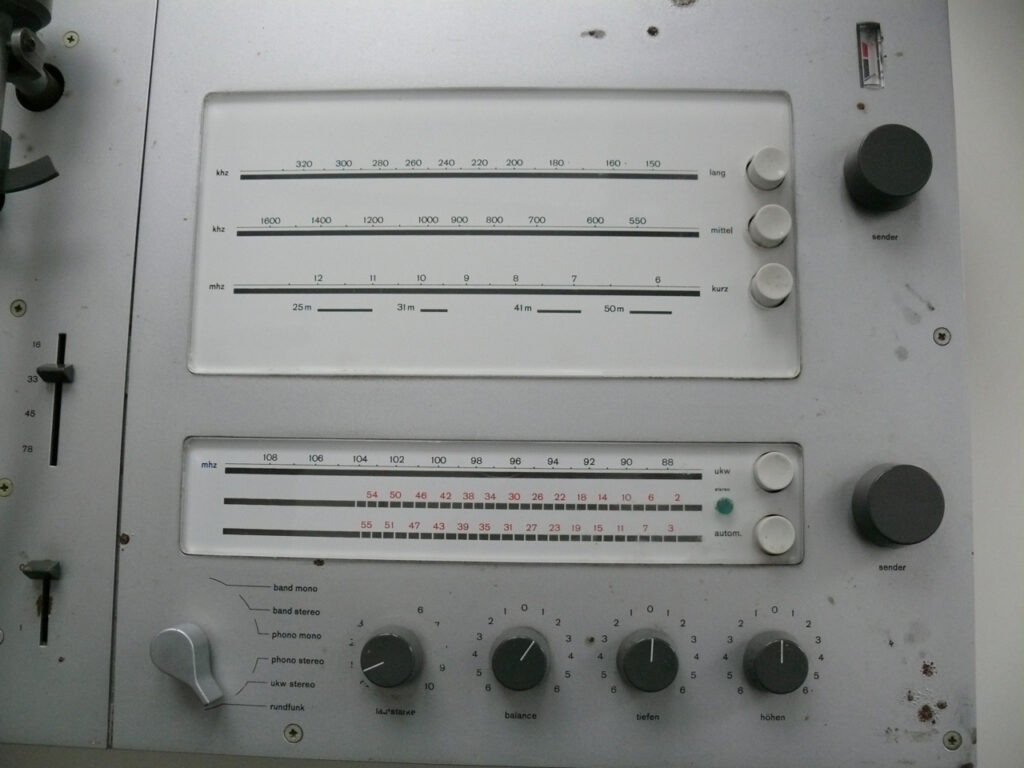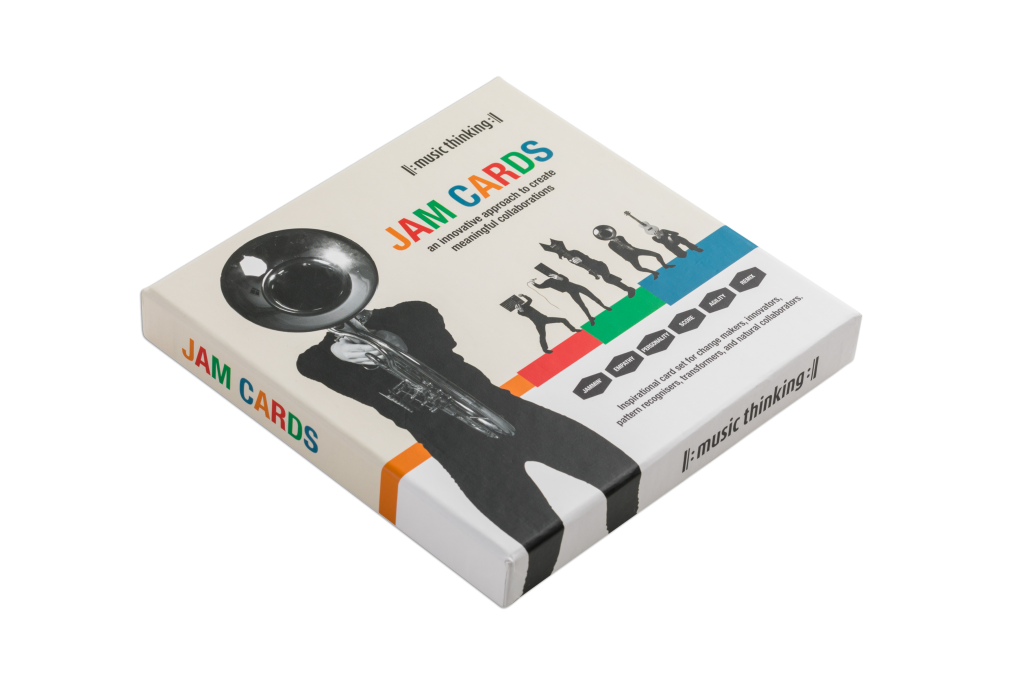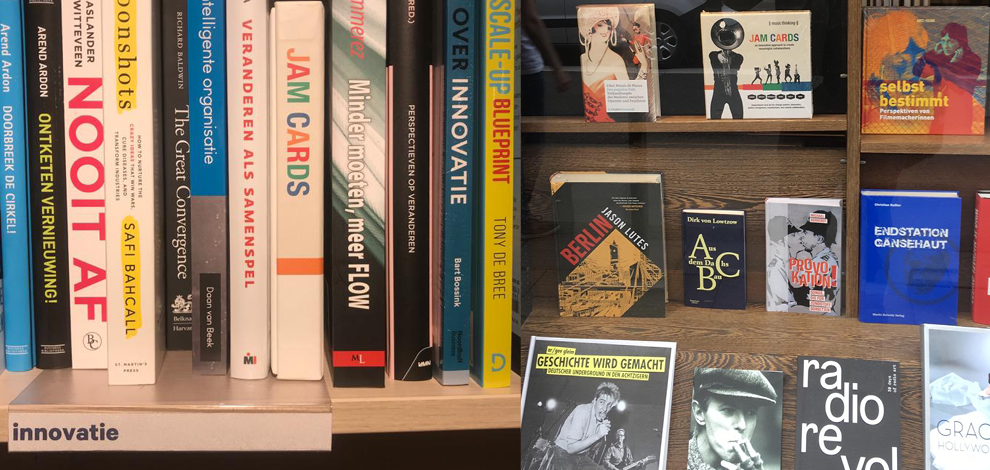
Choose the right partner, clear the dancefloor and trust our intuition is a quote by Tim Brown ( IDEO).
What does it need to trust the intuition of your partner? And who might be your partner? Is it a brand, an organisation, a service, a colleague or a leader you want to share the imaginary dancefloor?
The Trust Card
The essence of the Trust Card is that there will be a time where you want or have to perform. In other words, the time of thinking or asking questions is over. It is showtime, it is just doing, and the partners involved have to trust each other to create a seamless experience for themself and others. I think this counts as well for organisations and people as for services and products.

Trust is based on earlier signals, experiences, occasions and performances together. As a result, your intuition will be a relevant part of this ‘playing together’. So consequently, the performance you have at the moment will affect the trust of future performances. In conclusion, when people watch and listen to your play, it will affect the likeability if they will do this also in the future. The experience together will be a guarantee for trust.
The picture
This picture shows a Braun Hifi compact system from the end of the 1960s that stood for many years in our living room. It is designed by Dieter Rams who still is the biggest influence for Jony Ive the designer of the iMac, iPod, iPhone and many other apple products.


I love the faded characters around the volume (Lautstärke) knob. It shows the signs of the time and the high usage of just this essential design element. The Braun system was for many years in our living room the central place to listen to music from the radio and the first singles and albums I bought.
The design is a masterpiece by Dieter Rams, and it is worthwhile to have a look at his design philosophy of what good design should be. The Ten Principles of Good Design are until today a great inspiration for designers (see link below).
At the end of the 90s, I had the opportunity to visit Dieter Rams in his house in Hamburg. I was impressed by the sober and nice designed interior, including most of his works and the humble, friendly and sympathetic person.
As a present, he gave me the last edition (Hifi – Die Letzte Edition, 1990) which are loose high-resolution pictures in an LP Box – I loved this Music Thinking.
The quote
WHEN THE MUSIC SUDDENLY STARTS IT CAN BE DIFFICULT TO RECOGNIZE WHERE WE ARE IN THE PROCESS AND WHICH IS THE RIGHT FOOT TO PUT FORWARD. THE BEST GUIDE, IN LAUNCHING A NEW DESIGN PROJECT, IS SOMETIMES JUST TO CHOOSE THE RIGHT PARTNER, CLEAR THE DANCEFLOOR, AND TRUST OUR INTUITION.
The quote by Tim Brown is taken from his book Change by Design and describes the difficulty for a client to trust the facilitators of change. I like the intended idea of dancing together with your client through the different phases of a project and the mental states we can encounter. So at a certain point, you have to trust the experts and move along with them. This means you have to trust your own intuition and the intuition of your partner.
The sonic trigger
The Sugarhill Gang is an American hip hop trio. Their 1979 hit “Rapper’s Delight” was the first rap single to become a Top 40 hit on the Billboard Hot 100.
Rapper’s Delight was the first rap song to use a sample. Because there existed no precedent for clearing the rights of a single sample, they used it without permission.
The original samples are from “Good Times” by Chic. That was a popular record that DJ’s used who played at the block parties where rap got its start. The “Good Times” groove was easy to loop, creating a breakbeat that was perfect for MCs. But “Rapper’s Delight” didn’t just sample the beat; they clipped pieces of the original Chic song, transposed them and used snippets of it through the entire track.
However, the Sugarhill Gang wasn’t the first to borrow this riff – Supergroup Queen also used this bassline in their song “Another One Bites The Dust.”
The cues
The music thinking cues on this card are EMPATHY, AGILITY and REMIX.
The main cues in the performing phase (read more about Listen, Tune, Play and Perform) are AGILITY and REMIX. They are the driving force of delivery and change. But if there is no trusted connection with EMPATHY the performance might fail.
Some inspirational links
Radiomuseum Braun audio 250
Ten principles for good design by Dieter Rams
What is the Jam Cards?
Like what you have read above?
This is only one of the 44 cards. Get your own card set and use them in workshops or creative interactions. With the multiple triggers and many ways to combine the cards, there are inspirations for all kinds of usage.
You can order the jam cards via your local bookstore (worldwide) and have a nice chat with the people there and try the cards right away. Yes, you can also buy them at Amazon.com, Amazon.de, BIS Publishers, Bol.com and all the other online stores.

Boxed set
44 cards
18.5 x 18.5 cm
ISBN 978 90 6369 514 9
29,00 Euro

